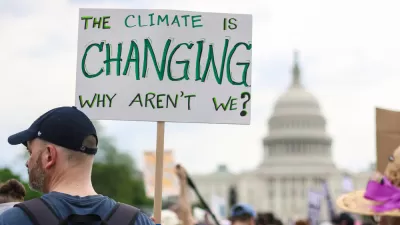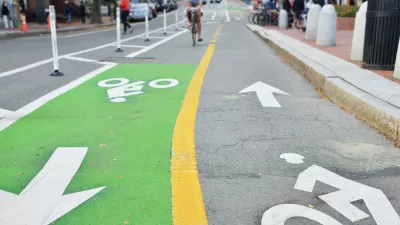McKay Jenkins looks at the challenges confronting Maryland as the state tries to reckon with the devastating consequences of the era of sprawl and prepare for an additional one million people over the next twenty five years.
With the state's natural and man-made systems stretched to their breaking point, Jenkins speaks with Rich Hall, Maryland's director of planning, who has the unenviable task of figuring out how to manage the need to accommodate 500,000 new homes in the next two and a half decades.
While a thoughtful new document called PlanMaryland lays out a sustainable growth vision for the state, already the fifth-most densely populated in the country, it has no legally binding language and poses a tough question for the area's residents and politicians, writes Jenkins: "What makes a state a good place to live, not just today but for a long time? Because when it comes right down to it, Maryland can grow like an oak, using its resources wisely and well, staying within its natural limits. Or it can grow like a cancer."
In a thorough piece, Jenkins looks at the key challenges the state is facing around such issues as housing ("how to induce people and businesses to move back to cities and towns"); protecting farms and forests ("From 1982 to 2007...state farmers sold some 500,000 acres of land-one-fifth of Maryland's total-to developers); and transportation ("The state's average commute time is now nearly thirty-two minutes, longer than both New York and New Jersey and one of the highest numbers in the country).
FULL STORY: The Era of Suburban Sprawl Has to End. So, Now What?

Alabama: Trump Terminates Settlements for Black Communities Harmed By Raw Sewage
Trump deemed the landmark civil rights agreement “illegal DEI and environmental justice policy.”

Study: Maui’s Plan to Convert Vacation Rentals to Long-Term Housing Could Cause Nearly $1 Billion Economic Loss
The plan would reduce visitor accommodation by 25% resulting in 1,900 jobs lost.

Planetizen Federal Action Tracker
A weekly monitor of how Trump’s orders and actions are impacting planners and planning in America.

Wind Energy on the Rise Despite Federal Policy Reversal
The Trump administration is revoking federal support for renewable energy, but demand for new projects continues unabated.

Passengers Flock to Caltrain After Electrification
The new electric trains are running faster and more reliably, leading to strong ridership growth on the Bay Area rail system.

Texas Churches Rally Behind ‘Yes in God’s Back Yard’ Legislation
Religious leaders want the state to reduce zoning regulations to streamline leasing church-owned land to housing developers.
Urban Design for Planners 1: Software Tools
This six-course series explores essential urban design concepts using open source software and equips planners with the tools they need to participate fully in the urban design process.
Planning for Universal Design
Learn the tools for implementing Universal Design in planning regulations.
Caltrans
Smith Gee Studio
Institute for Housing and Urban Development Studies (IHS)
City of Grandview
Harvard GSD Executive Education
Toledo-Lucas County Plan Commissions
Salt Lake City
NYU Wagner Graduate School of Public Service




























